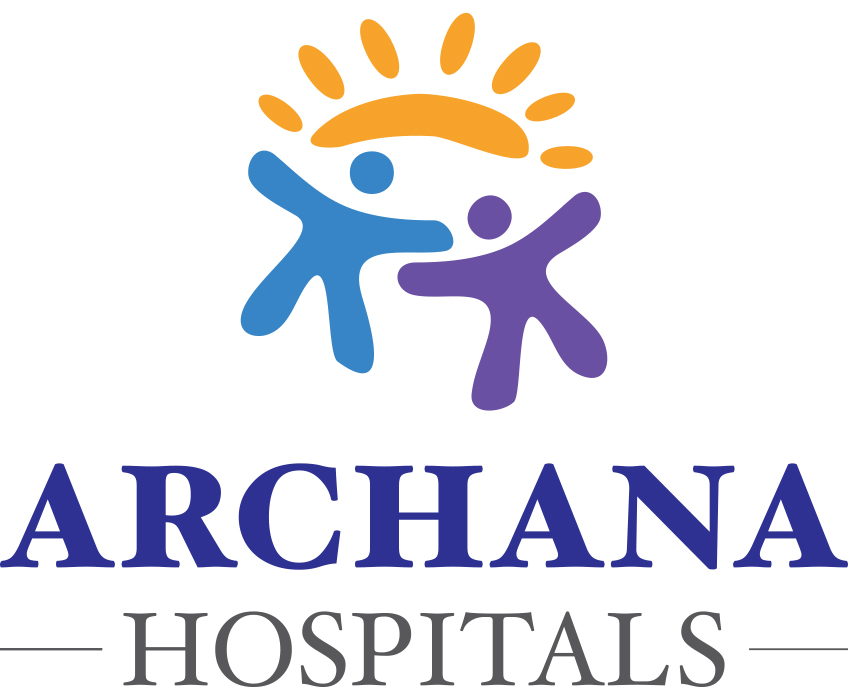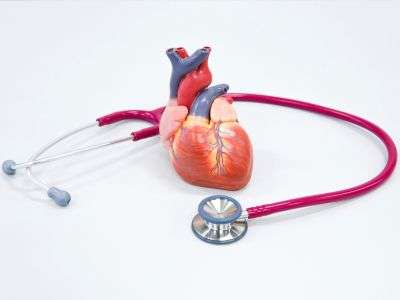Coronary Artery Disease (CAD) is the most common form of heart disease, which is one of the major causes of death globally. CAD happens when plaque accumulation narrows or blocks the coronary arteries, which provide the heart with oxygen-rich blood. Angina (chest pain), heart attacks, or even heart failure may result from this if treatment is not received.
At Archana Hospital, recognized as the best cardiology hospital in Madinaguda & Chandanagar, Hyderabad, we specialize in Coronary Artery Bypass Graft (CABG) surgery, a highly effective procedure to restore proper blood flow to the heart. Our expert cardiac surgeons and advanced medical technology ensure successful outcomes for patients with severe heart disease.

Understanding Coronary Artery Disease (CAD) and the Role of CABG
Atherosclerosis, a disorder in which fatty deposits (plaques) build up in the coronary arteries, is the main cause of CAD. This may result in decreased blood flow, raising the possibility of issues related to the heart.
Early Diagnosis & Treatment
Early CAD detection is essential to avoiding serious cardiac damage. Typical diagnostic techniques consist of:
Electrocardiogram (ECG): Assesses and identifies irregularities in cardiac rhythm. An echocardiogram uses ultrasonography to evaluate the function of the heart.
Coronary angiography: This procedure shows clogged arteries using X-rays and contrast dye. The stress test measures how well the heart works when exerted physically.
CABG: A Surgical Solution for Blocked Arteries
CABG is advised when lifestyle modifications and medicines alone are not enough to restore blood flow. By utilizing a healthy blood vessel (transplant) from another area of the body to create a bypass around clogged arteries, the procedure ensures that the heart will always receive oxygen.
At Archana Hospital, known as the top heart hospital in Madinaguda & Chandanagar, Hyderabad, our experienced surgeons perform CABG using state-of-the-art technology for optimal patient recovery and long-term heart health.
Symptoms Indicating the Need for CABG
Patients with CAD may experience various symptoms indicating severe arterial blockage, including:
Angina, or chest pain or discomfort, is frequently brought on by stress or physical activity.
Breathlessness: A result of the heart receiving insufficient oxygen.
Weakness and fatigue: Energy levels are impacted by decreased blood flow. Heart rhythm disturbances, or arrhythmias, are irregular heartbeats.
Ankle or leg swelling: A result of poor circulation.
If symptoms persist despite medication or lifestyle changes, CABG may be necessary to prevent life-threatening complications such as heart attacks or heart failure.
Types of CABG Performed at Archana Hospital
At Archana Hospital, one of the best hospitals for bypass surgery in Hyderabad, our cardiac surgeons specialize in different types of CABG based on the severity of blockage and patient condition.
1. Traditional CABG
- The most common approach.
- Requires an open-heart procedure with a heart-lung machine to temporarily take over heart function during surgery.
2. Off-Pump CABG (Beating Heart Surgery)
- Performed without stopping the heart.
- Reduces complications for high-risk patients, such as those with kidney disease or previous strokes.
3. Minimally Invasive CABG
- Uses small incisions instead of a large chest opening.
- Shorter hospital stay and faster recovery time.
Each patient undergoes a detailed evaluation to determine the most suitable CABG technique based on their overall health and heart condition.
How CABG is Performed – Step-by-Step Guide
CABG is a major surgical procedure performed under general anesthesia. The steps include:
- Preparing the Patient
- The surgical team administers anesthesia and monitors heart function.
- A vein or artery graft is harvested, commonly from the leg (saphenous vein), arm (radial artery), or chest (internal mammary artery).
- Accessing the Heart
- In traditional CABG, the surgeon makes an incision in the chest and temporarily stops the heart with a heart-lung machine maintaining circulation.
- In off-pump CABG, the heart continues to beat during surgery.
- Creating the Bypass
- The harvested graft is attached above and below the blocked artery, redirecting blood flow to the heart muscle.
- Closing the Incision & Recovery
- The heart is restarted if it was stopped during surgery.
- The chest incision is closed, and the patient is transferred to the Intensive Care Unit (ICU) for post-surgery monitoring.
Risks & Complications of CABG
CABG has some dangers, just like any major operation, but Archana Hospital, a renowned heart hospital in Madinaguda & Chandanagar, Hyderabad, minimizes issues. Possible dangers consist of: Bleeding or infection An irregular heartbeat, or arrhythmia Stroke-causing blood clots Temporary confusion or memory issues Rare instances of kidney malfunction Our staff adheres to stringent post-operative guidelines to guarantee each patient has a secure and easy recovery.
Cardiac Rehabilitation (After CABG)
Post-surgery recovery is just as important as the procedure itself. At Archana Hospital’s Cardiac Rehabilitation Center in Madinaguda & Chandanagar, Hyderabad, we offer a structured rehabilitation program to help patients regain strength and maintain heart health.
Key Components of Cardiac Rehab:
- Supervised Exercise Therapy – Gradually strengthens heart function.
- Nutritional Counseling – Focuses on a heart-healthy diet to prevent further blockages.
- Stress Management – Techniques like meditation and breathing exercises help reduce anxiety.
- Medication Management – Regular follow-ups ensure the right medications for cholesterol, blood pressure, and blood thinning.
- Lifestyle Modifications – Guidance on quitting smoking, weight management, and healthy habits.
Patients who complete cardiac rehab have faster recovery times and lower risks of future heart complications.
Frequently Asked Questions
The surgery typically lasts 3 to 6 hours, depending on the number of grafts needed.
In most cases, CABG provides long-term relief. However, lifestyle habits and underlying health conditions play a role in determining if another surgery is needed later.
Recovery time varies, but most patients can resume light work within 6-8 weeks and normal activities in 3-6 months.
- Follow a heart-healthy diet (low in fat, sugar, and salt).
- Exercise regularly as advised by your doctor.
- Take prescribed medications without skipping doses.
- Attend follow-up appointments for regular heart checkups.
- Avoid smoking and excessive alcohol consumption.
Conclusion
Coronary Artery Bypass Surgery (CABG) is a life-saving procedure that restores proper blood flow to the heart, significantly improving heart function and overall quality of life.
At Archana Hospital, the best hospital for bypass surgery in Hyderabad, we provide cutting-edge surgical techniques, expert cardiac care, and post-operative rehabilitation to ensure the best possible outcomes.
If you or a loved one is experiencing heart-related symptoms, schedule a consultation with our leading cardiac specialists today. Your heart health is our priority!












